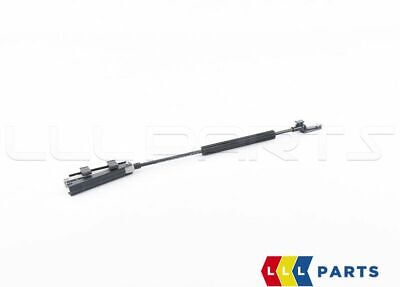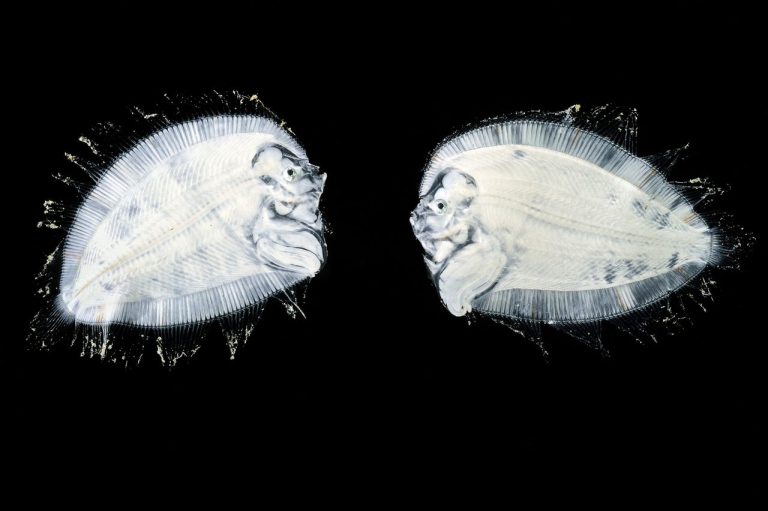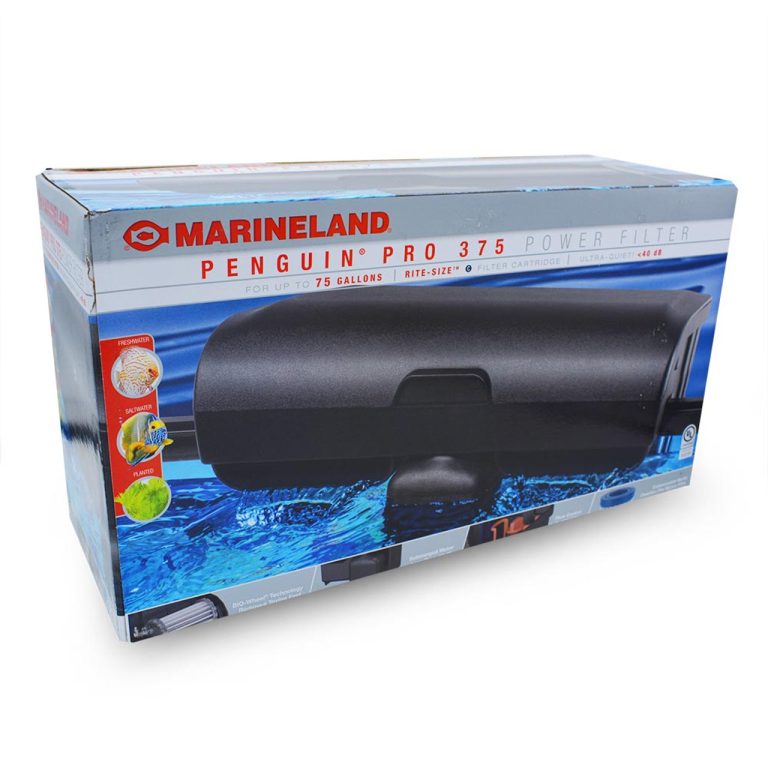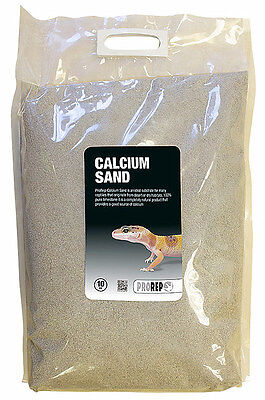Wet Dry Filter for Freshwater Aquarium: The Ultimate Aquarist’s Solution
A wet-dry filter is a useful device for maintaining water quality in a freshwater aquarium. It efficiently removes waste and harmful substances, ensuring a clean and healthy environment for fish and plants to thrive.
Additionally, it oxygenates the water, providing optimal conditions for biological filtration. With its versatile design and effective functionality, a wet-dry filter is an essential component for any freshwater aquarium setup.

Credit: www.amazon.com
Introduction: The Evolution Of Aquarium Filtration Systems
Aquarium filtration systems play a crucial role in maintaining the health and well-being of fish and other aquatic inhabitants. Over the years, there have been various methods and technologies used for aquarium filtration, each with its own advantages and drawbacks.
In this section, we will explore the evolution of aquarium filtration systems and introduce the wet dry filter as the ultimate solution. So, let’s dive in and understand the importance of aquarium filtration systems.
Understanding The Importance Of Aquarium Filtration Systems:
- Filtration ensures a clean and healthy environment for aquarium inhabitants by removing harmful substances and maintaining water quality.
- It helps in the removal of toxins such as ammonia, nitrites, and nitrates that can be harmful to fish.
- Filtration also provides oxygenation and proper circulation of water, mimicking the natural habitat of aquatic creatures.
- By controlling the levels of organic matter, debris, and detritus, filtration helps prevent the buildup of harmful bacteria and algae.
- It promotes the growth of beneficial bacteria that aid in the breakdown of waste products, contributing to a stable and balanced ecosystem within the aquarium.
Now that we understand the importance of aquarium filtration systems, let’s explore the drawbacks of traditional filtration methods.
The Drawbacks Of Traditional Filtration Methods:
- Traditional methods like sponge filters and hang-on-back filters can be limited in terms of their capacity to handle large aquariums or heavily stocked tanks.
- These methods may not provide sufficient biological filtration, leading to a higher risk of poor water quality and diseased fish.
- Maintenance can be time-consuming and challenging for larger systems, requiring frequent cleaning and replacement of filter media.
- Traditional filtration methods may not adequately remove dissolved organic compounds and can contribute to the growth of harmful substances in the water.
- They often lack the efficiency to handle excessive fish waste or heavy feeding, resulting in water quality issues that can stress or harm aquatic life.
To address these limitations, the wet dry filter system presents itself as the ultimate solution for aquarium filtration. Let’s take a closer look at how it offers a superior alternative to traditional methods.
How Wet Dry Filters Work: A Deep Dive Into Their Mechanism
Wet dry filter for freshwater aquariums: how wet dry filters work: a deep dive into their mechanism
If you’re a freshwater aquarium enthusiast looking for an efficient filtration system, a wet dry filter might be what you need. These filters are known for their superior performance and versatility. Let’s take a closer look at how wet dry filters work, and the components that make them unique.
The Unique Design And Components Of A Wet Dry Filter
Wet dry filters, also known as trickle filters, consist of several key components that work in harmony to provide exceptional filtration for your freshwater aquarium. Here are the main components and their functions:
- Sump: The sump is a separate chamber that houses the wet dry filter. It provides a larger water volume, adding stability to the overall aquarium system.
- Overflow box: This component ensures a constant flow of water into the sump. It helps to remove debris and maintain water clarity.
- Mechanical filtration media: These media, such as sponge filters, filter floss, and filter pads, trap large particles and debris from the water, preventing them from entering the biological filtration stage.
- Biological filter media: The heart of the wet dry filter, this media provides a large surface area for beneficial bacteria to grow and thrive. These bacteria play a crucial role in breaking down harmful substances, such as ammonia and nitrites, into less toxic forms.
- Trickle tower: This tower-like structure allows water to trickle down through the biological filter media, providing ample oxygenation for the beneficial bacteria. This process enhances the efficiency of biological filtration.
The Process Of Biological Filtration In A Wet Dry Filter
One of the key functions of a wet dry filter is biological filtration. This process ensures the breakdown of harmful substances in the aquarium water. Here’s how biological filtration works in a wet dry filter:
- Beneficial bacteria, such as nitrifying bacteria, colonize the biological filter media.
- These bacteria convert toxic ammonia, produced by fish waste and decaying organic matter, into nitrites.
- Nitrites, which are also harmful to fish, are further transformed into nitrates by another group of bacteria called nitrate-forming bacteria.
- Nitrates, though less toxic than ammonia or nitrites, can still be harmful in high concentrations. They can be removed through regular water changes or by incorporating additional filtration, such as chemical filtration.
The Role Of The Trickle Tower In Maximizing Oxygenation
The trickle tower in a wet dry filter plays a vital role in maximizing oxygenation within the system. Here’s how it works:
- As water trickles down the tower, it is exposed to a large surface area of air.
- This exposure promotes gas exchange, allowing oxygen from the air to dissolve into the water.
- The increased oxygen levels enhance the efficiency of biological filtration, as the beneficial bacteria require oxygen to carry out their processes effectively.
- Proper oxygenation is crucial for maintaining a healthy and stable aquatic environment for your freshwater aquarium inhabitants.
Exploring The Advantages Of Mechanical And Chemical Filtration
In addition to biological filtration, wet dry filters offer mechanical and chemical filtration benefits. Here’s how these filtration methods can enhance your freshwater aquarium:
- Mechanical filtration helps to remove large particles, debris, and uneaten food from the water, improving water clarity and reducing the load on the biological filter.
- Chemical filtration utilizes specialized filter media, such as activated carbon or zeolite, to remove dissolved impurities, odors, and harmful substances, including trace elements and medications.
- These additional filtration methods work alongside biological filtration to provide a comprehensive and effective filtration system, ensuring the optimal health and well-being of your freshwater aquarium inhabitants.
Wet dry filters offer a unique and efficient mechanism for maintaining the water quality in your freshwater aquarium. With their distinct design and components, including the trickle tower for maximum oxygenation, and the advantages of mechanical and chemical filtration, these filters provide a complete and reliable solution for your filtration needs.
Benefits Of Using Wet Dry Filters In Freshwater Aquariums
Wet Dry Filter For Freshwater Aquarium
Enhancing Water Quality: The Impact On Fish Health And Well-Being
The quality of water in a freshwater aquarium is vital for the health and well-being of your fish. Implementing a wet dry filter can significantly enhance water quality, offering a range of benefits that contribute to the overall health of your aquatic pets.
- The high oxygenation level in a wet dry filter helps in maintaining optimal oxygen levels in the water, promoting the health of your fish and other aquatic organisms.
- The filter efficiently removes excess organic waste, such as uneaten food and fish waste, preventing its accumulation in the aquarium. This helps in reducing the risk of ammonia and nitrate build-up.
- By removing solid waste and debris from the water, a wet dry filter helps to keep the water clean and visually appealing, providing a better environment for your aquarium inhabitants.
Reducing Ammonia And Nitrate Levels: The Importance Of Biological Filtration
High levels of ammonia and nitrate in aquarium water can be detrimental to fish health. Wet dry filters play a crucial role in reducing these harmful substances through effective biological filtration.
- Beneficial bacteria colonize the bio-media in the wet dry filter, breaking down toxic ammonia into less harmful compounds, such as nitrites and nitrates.
- Nitrate, also harmful to fish in excessive amounts, is further converted into relatively harmless nitrogen gas.
- This natural biological process helps to maintain optimal water conditions, preventing ammonia and nitrate-related health issues and ensuring a healthier aquatic ecosystem.
Promoting Beneficial Bacteria Growth: Enhancing The Aquarium’S Ecosystem
A thriving aquarium ecosystem relies on the presence of beneficial bacteria. Wet dry filters provide an ideal environment for beneficial bacteria growth and colonization, offering several advantages for your aquarium ecosystem.
- The high oxygen levels within the wet dry filter create an aerobic environment that encourages the growth of beneficial bacteria.
- The proliferation of these bacteria helps maintain biological balance in the tank by efficiently breaking down waste and converting harmful compounds.
- Beneficial bacteria also contribute to the overall chemical stability of the aquarium, supporting a healthy and flourishing environment for your fish and other aquatic organisms.
Minimizing Water Changes: The Time And Effort Saved With A Wet Dry Filter
Water changes are an essential aspect of maintaining aquarium health, but they can be time-consuming and labor-intensive. A wet dry filter can significantly reduce the frequency of water changes required, providing convenience and ease of maintenance.
- The efficient biological filtration provided by a wet dry filter helps to keep the water parameters stable, reducing the need for frequent water changes.
- By effectively removing waste and pollutants from the water, a wet-dry filter helps to prolong the time between water changes, saving you valuable time and effort.
- With regular maintenance and monitoring, a wet dry filter can create a more balanced and sustainable aquarium system, reducing the workload while maintaining a healthy aquatic environment.
Incorporating a wet dry filter into your freshwater aquarium can have numerous benefits for the well-being of your fish and the overall health of your aquarium ecosystem. Improving water quality, reducing ammonia and nitrate levels, promoting beneficial bacteria growth, and minimizing the frequency of water changes are just a few of the advantages that a wet dry filter brings.
By implementing this efficient filtration system, you can provide your aquarium inhabitants with a clean and stable environment, ensuring their long-term health and enjoyment.
Choosing The Right Wet Dry Filter: Factors To Consider
Wet Dry Filter For Freshwater Aquarium
Size and capacity:
- When selecting a wet dry filter for your freshwater aquarium, it’s essential to consider the size and capacity of the filter.
- Determine the appropriate filter size based on your aquarium’s volume to ensure efficient filtration.
- The filter should be able to handle the amount of water in your tank, preventing any overflows or inadequate filtration.
Noise level:
- Another crucial factor to consider is the noise level produced by the filter.
- Look for a wet dry filter that operates quietly, ensuring a peaceful living space for both you and your aquatic pets.
- A noisy filter can be disruptive and annoying, so opting for a quiet operation will enhance your overall aquarium experience.
Customizability:
- Compatibility with various aquarium setups and preferences is a significant consideration.
- Choose a wet dry filter that can be customized to accommodate different types of aquariums and setups.
- Whether you have a planted tank, a community aquarium, or a specialty setup, make sure the filter can be adjusted to suit your specific needs.
Maintenance and cleaning:
- Understanding the maintenance and cleaning requirements of a wet dry filter is crucial for its long-term effectiveness.
- Consider how easy it is to access and clean the filter’s media, as well as replacing any necessary parts.
- A filter that requires regular maintenance and cleaning will ensure the longevity of your aquarium’s filtration system, keeping the water clean and healthy for your aquatic inhabitants.
Remember, choosing the right wet dry filter for your freshwater aquarium is essential to maintain optimal water quality and a thriving aquatic environment. Take into account factors such as size and capacity, noise level, customizability, and maintenance requirements when making your decision.
By considering these factors, you can find a wet dry filter that not only meets your aquarium’s needs but also enhances your overall aquarium experience.
Step-By-Step Installation And Setup Guide For Wet Dry Filters
Wet Dry Filter For Freshwater Aquarium
A wet dry filter is an essential component in maintaining a healthy and thriving freshwater aquarium. This powerful filtration system provides efficient biological and mechanical filtration, ensuring crystal-clear water and a stable environment for your aquatic pets. If you’re new to wet dry filters or simply need a step-by-step guide to installation and setup, you’re in the right place.
In this section, we’ll walk you through the process, from gathering the necessary materials and tools to priming the filter and ensuring proper water flow.
Gathering The Necessary Materials And Tools:
- Wet dry filter system: Choose a filter system suitable for your aquarium size and requirements.
- Aquarium plumbing kit: This kit will include all the necessary pipes, connectors, and valves for connecting the filter to your aquarium’s plumbing system.
- Air pump or water pump: Depending on the type of wet dry filter you have, you’ll need either an air pump or a water pump to facilitate water circulation.
- Media and filter pads: Different types of filter media, such as biological media, activated carbon, and filter pads, are essential for efficient filtration.
- Pipe cutter or saw: You may need to cut pipes to the desired length, so having a pipe cutter or saw handy will make the installation process easier.
- Wrench and pliers: These tools will be needed to tighten and connect various components of the filter system and plumbing.
Determining The Ideal Location For The Filter:
- Accessibility: Choose a location where you can easily access and maintain the filter without causing disruption to the aquarium or fish.
- Stability: Ensure that the surface where the filter will be placed is stable, level, and able to support the weight of the filter system, as well as any additional water pressure.
- Proximity to the aquarium: Position the filter within a reasonable distance from the aquarium to minimize the length of plumbing required.
- Noise level: Consider placing the filter in an area where the noise generated by the air or water pump, if any, will not be too bothersome.
Connecting The Filter To The Aquarium’S Plumbing System:
- Follow the instructions provided with your specific wet dry filter system and aquarium plumbing kit for guidance on connecting the necessary pipes, connectors, and valves.
- Ensure a secure and watertight connection by using appropriate sealants or gasket material where necessary.
- Double-check all connections and make any adjustments before turning on the filter system to prevent leaks or water damage.
Priming The Filter And Ensuring Proper Water Flow:
- Fill the filter sump with water to the appropriate level to prime the system.
- Switch on the water or air pump to initiate water flow through the filter.
- Monitor the water flow and adjust the pump’s settings if needed to achieve the desired flow rate.
- Regularly check the filter for any clogs or debris that may reduce water flow and impede filtration efficiency.
By following these step-by-step procedures, you can confidently install and set up a wet dry filter for your freshwater aquarium. Remember to always refer to the instructions provided by the manufacturer for the specific model you have. With proper installation and maintenance, your wet dry filter will keep your aquarium’s water clean and clear, promoting a healthy and thriving aquatic ecosystem.
Maintenance Tips For Optimal Performance And Longevity
Regular Cleaning And Replacement Of Filter Media:
Regular maintenance is essential for ensuring optimal performance and longevity of your wet dry filter. Here are some key points to keep in mind:
- Clean the filter media on a regular basis to prevent clogging and maintain efficient filtration. Depending on the type of media used, this may involve rinsing, squeezing, or even replacing the media altogether.
- The frequency of cleaning will vary based on the size of your aquarium, the number of fish, and the type of filter media. It’s recommended to check your filter manufacturer’s guidelines for specific instructions.
- When cleaning the filter media, avoid using tap water as it may contain chlorine or other harmful chemicals. Instead, use water from the tank itself or dechlorinated water.
- Replace filter media as needed, typically every 6 to 12 months, depending on its condition and effectiveness. This will help ensure that the filter continues to operate efficiently and provide clean, clear water for your fish.
Monitoring Water Parameters And Adjusting The Filter Accordingly:
Maintaining the ideal water parameters in your freshwater aquarium is crucial for the health and well-being of your fish. Here’s what you need to know:
- Regularly test the water parameters such as ph, ammonia, nitrite, and nitrate levels using appropriate test kits. This will help you identify any issues and take necessary steps to correct them.
- Adjust the wet dry filter’s flow rate and media configuration based on the water parameters. For example, if the ammonia level is high, you may need to increase the biological filtration media to enhance the removal of ammonia.
- Keep an eye on the temperature of the water and ensure that it remains within the appropriate range for your fish species. Some wet dry filters have built-in heaters or chillers that can help maintain the desired temperature.
- Maintaining proper water quality will not only promote the health of your fish but also prevent issues such as algae growth and cloudy water.
Troubleshooting Common Issues And Ensuring Smooth Operation:
Occasionally, you may encounter various issues with your wet dry filter. Here are a few troubleshooting tips to keep in mind:
- If you notice reduced water flow, check for any clogs or blockages in the intake and output tubes. Clear any obstructions to restore proper flow.
- Strange noises coming from the filter may indicate loose parts or impeller issues. Turn off the filter, inspect the components, and tighten or replace as necessary.
- In case of leaks, check the seals and connections of the filter for any damage or wear. Replace faulty parts to prevent further leaks.
- Regularly inspect the filter and its components for signs of wear and tear. Replace any worn-out parts to prevent malfunctions and ensure smooth operation.
Extended Tips For Advanced Users: Modifications And Upgrades:
For more advanced users looking to enhance the performance of their wet dry filter, consider the following modifications and upgrades:
- Install additional filter media to improve the filtration capacity. This could include adding activated carbon, ceramic rings, or specialized media for specific filtration needs.
- Customize the water flow rate by adjusting the pump speed or installing a flow control valve. This allows you to tailor the filtration to the specific requirements of your aquarium.
- Consider upgrading to a larger wet dry filter if you have a heavily stocked aquarium or if you plan to add more fish in the future. A bigger filter will provide better filtration capacity and can handle higher bio-load.
- Explore other filtration methods such as uv sterilizers or protein skimmers to further enhance water quality and clarity.
By following these maintenance tips and considering advanced modifications if desired, you can ensure that your wet dry filter operates at its best, promoting a healthy and thriving freshwater aquarium.
Frequently Asked Questions Of Wet Dry Filter For Freshwater Aquarium
How Does A Wet Dry Filter Work For A Freshwater Aquarium?
A wet dry filter is a filtration system that uses a trickle-down method to remove waste and toxins from the aquarium water. It works by allowing water to flow over a bio-media, promoting beneficial bacteria growth that breaks down harmful substances.
What Are The Benefits Of Using A Wet Dry Filter In A Freshwater Aquarium?
Using a wet dry filter in a freshwater aquarium offers several benefits, including increased oxygenation, efficient biological filtration, enhanced water clarity, reduced ammonia and nitrites levels, and a healthier environment for fish and plants.
Can I Use A Wet Dry Filter In A Small Freshwater Aquarium?
Yes, you can use a wet dry filter in a small freshwater aquarium. However, it’s essential to choose an appropriately sized filter that matches the tank’s capacity to ensure optimal filtration without overwhelming the system.
How Often Should I Clean A Wet Dry Filter In A Freshwater Aquarium?
It is recommended to clean the wet dry filter in a freshwater aquarium every month or as needed. Regular maintenance includes rinsing and replacing filter media, checking for clogs, and ensuring proper water flow for optimal performance.
Conclusion
To summarize, incorporating a wet dry filter into your freshwater aquarium can greatly enhance its overall health and well-being. The filter’s ability to efficiently remove excess waste, harmful toxins, and provide ample oxygenation ensures a clean and thriving aquatic environment for your fish and plants.
Not only does it promote water clarity, but it also reduces the risk of disease outbreaks, keeping your aquatic inhabitants safe and healthy. With its easy maintenance and customizable options, a wet dry filter offers a versatile and practical solution for maintaining optimal water quality in your aquarium.
So, whether you are a seasoned hobbyist or a novice aquarium enthusiast, investing in a wet dry filter is a wise choice that will undoubtedly benefit both you and your aquatic ecosystem. Give your aquarium the best chance to flourish and enjoy the beauty of a pristine aquatic environment with a wet dry filter.





